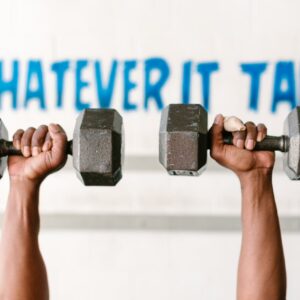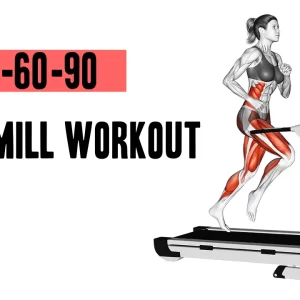Contents
- What Is a Plateau in a Workout?
- Why Do Plateaus Happen?
- Signs You’ve Hit a Workout Plateau
- How Long Do Plateaus Last?
- How to Break Through a Workout Plateau
- Should You Worry About a Plateau?
- Real-World Example: Breaking a Strength Plateau
- Preventing Future Plateaus
- Conclusion: Progress Is Nonlinear—Keep Moving Forward
One of the most frustrating experiences in fitness is working hard—day after day—only to stop seeing results. You’re following the same workout plan, eating clean, and staying consistent, yet your strength, muscle gains, or fat loss seem to flatline. This phenomenon is known as a workout plateau.
In this article, we’ll break down exactly what a plateau is, why it happens, how to recognize it, and most importantly, how to break through it with smart training and recovery strategies.
What Is a Plateau in a Workout?
A workout plateau occurs when your progress stalls despite continued effort. It can affect any area of fitness: muscle growth, fat loss, endurance, or strength. In other words, you’re no longer adapting to your current training stimulus.
Plateau Defined:
“A plateau is a period during which no significant improvement in performance, physique, or fitness level occurs, despite consistent exercise efforts.”
Why Do Plateaus Happen?
The human body is highly adaptable. In response to training, your muscles, nervous system, and metabolism undergo changes to meet increased demands. But once your body has adapted to that stimulus, progress slows or stops unless new challenges are introduced.
Common Causes of Plateaus:
1. Lack of Progressive Overload
If you’re not gradually increasing resistance, reps, or volume, your body has no reason to continue adapting.
2. Repetitive Programming
Doing the same workouts repeatedly leads to neurological and muscular adaptation. Your body becomes efficient—and efficiency can mean stagnation in fitness gains.
3. Inadequate Recovery
Sleep, rest days, and proper nutrition are crucial for repair and growth. Without adequate recovery, your body can’t rebuild effectively.
4. Caloric Deficits or Surpluses
Too few calories can prevent muscle growth and energy restoration; too many may hinder fat loss goals. Nutritional imbalance can halt results.
5. Hormonal Factors and Stress
Chronic stress, overtraining, or hormonal changes (e.g., thyroid dysfunction, menstrual irregularities) can impact energy, recovery, and metabolism.
6. Psychological Burnout
Mental fatigue or loss of motivation can lead to reduced effort in workouts, whether consciously or subconsciously.
Signs You’ve Hit a Workout Plateau
- No strength increases despite consistent lifting
- No visible body changes (muscle growth or fat loss stalls)
- Decline in workout motivation
- Increased fatigue or irritability
- Repetitive soreness or joint discomfort
- Cardio performance stops improving (same run time, no change in heart rate)
How Long Do Plateaus Last?
Plateaus can last a few weeks to several months depending on your response and training adjustments. The longer you stick to the same unchanging routine, the more prolonged your plateau may become.
How to Break Through a Workout Plateau
1. Implement Progressive Overload
Increase weight, reps, sets, or training frequency gradually. Even a 5% increase can reignite growth. (If you are wondering how to implement Progressive Overload, check out our previous article.)
2. Change Your Routine
Introduce new exercises, switch training splits (e.g., full body to push-pull-legs), or modify training modality (e.g., free weights vs. machines).
3. Prioritize Recovery
- Get 7–9 hours of sleep per night
- Add rest days or a full deload week
- Use active recovery techniques (e.g., foam rolling, walking, mobility drills)
4. Focus on Nutrition
- Track your macros to ensure you’re fueling performance and recovery
- Add protein if building muscle
- Reevaluate calorie intake if cutting fat
5. Incorporate Periodization
Use structured training cycles that vary intensity and volume to prevent stagnation and overtraining. Options include:
- Linear periodization
- Undulating periodization
- Block periodization
6. Train Weak Points
If you’re always working your strong areas, smaller muscle groups may lag behind. Prioritize lagging body parts with targeted accessory work.
7. Hire a Coach or Trainer
An experienced coach can help identify gaps in your program and make science-based adjustments.
Should You Worry About a Plateau?
Plateaus are not failures. They are natural and expected parts of the training process. In fact, plateaus often signal that you’ve become consistent enough to reach a stable baseline—a powerful achievement in itself.
The key is recognizing when you’re stuck and applying strategic, science-backed interventions to reintroduce challenge and novelty.
Real-World Example: Breaking a Strength Plateau
Case Study: Sarah was bench pressing 95 lbs for 3 sets of 8 reps for weeks. Despite consistent effort, she couldn’t move past this weight.
Fix: Her coach swapped her program to include:
- Pause bench press (to eliminate momentum)
- Dumbbell chest presses (to isolate muscle imbalances)
- Added a deload week for recovery
Result: Within 3 weeks, Sarah hit a personal best of 105 lbs for 5 reps.
Preventing Future Plateaus
- Periodically reassess goals and progress
- Cycle through training blocks every 6–8 weeks
- Monitor fatigue and mood for signs of overreaching
- Stay adaptable—listen to feedback from your body
Conclusion: Progress Is Nonlinear—Keep Moving Forward
Workout plateaus are frustrating, but they’re also normal. Every fitness journey includes phases of rapid progress and periods of stagnation. What matters most is how you respond.
Stay consistent, challenge your body in new ways, and embrace rest and recovery as part of the growth process. With patience and strategy, you’ll get past your plateau—and come back even stronger.
Keywords
- workout plateau
- gym progress stalled
- how to break through a plateau
- fitness plateau symptoms
- strength training plateau
- why am I not progressing in the gym
- plateau in muscle gain
- stuck in workout routine
References
- Schoenfeld, B. J., Ogborn, D., & Krieger, J. W. (2016). “Effects of Resistance Training Frequency on Measures of Muscle Hypertrophy: A Systematic Review and Meta-Analysis.” Sports Medicine, 46(11), 1689–1697. https://doi.org/10.1007/s40279-016-0543-8
- American College of Sports Medicine. (2021). ACSM’s Guidelines for Exercise Testing and Prescription (11th ed.).
- Issurin, V. B. (2008). “Block periodization versus traditional training theory: a review.” Journal of Sports Medicine and Physical Fitness, 48(1), 65–75.
- Helms, E. R., Cronin, J., Storey, A., & Zourdos, M. C. (2016). “Application of the Repetitions in Reserve-Based Rating of Perceived Exertion Scale for Resistance Training.” Strength and Conditioning Journal, 38(4), 42–49.
- Zatsiorsky, V. M., & Kraemer, W. J. (2006). Science and Practice of Strength Training (2nd ed.). Human Kinetics.



